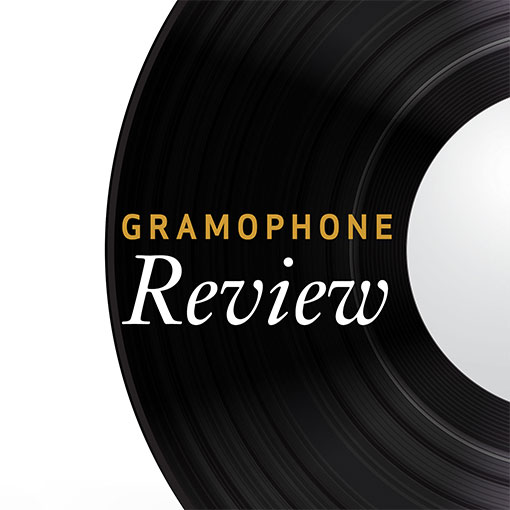Works for Guitar and Orchestra
View record and artist detailsRecord and Artist Details
Composer or Director: Mario Castelnuovo-Tedesco, Nicolò Paganini, Pablo (Martín Melatón) Sarasate (y Navascuéz)
Label: Decca
Magazine Review Date: 3/1994
Media Format: CD or Download
Media Runtime: 59
Mastering:
DDD
Catalogue Number: 440 293-2DH

Tracks:
| Composition | Artist Credit |
|---|---|
| Concerto for Violin and Orchestra No. 2 |
Nicolò Paganini, Composer
Andrew Litton, Conductor London Mozart Players Nicola Hall, Guitar Nicolò Paganini, Composer |
| Concerto for Guitar and Orchestra No. 1 |
Mario Castelnuovo-Tedesco, Composer
Andrew Litton, Conductor London Mozart Players Mario Castelnuovo-Tedesco, Composer Nicola Hall, Guitar |
| Zigeunerweisen |
Pablo (Martín Melatón) Sarasate (y Navascuéz), Composer
Andrew Litton, Conductor London Mozart Players Nicola Hall, Guitar Pablo (Martín Melatón) Sarasate (y Navascuéz), Composer |
Author: Christopher Headington
''Nicola plays Nicolo''—the tag has been virtuously resisted, but Nicola Hall brings virtuosity to her transcription of the Second Violin Concerto by the Italian musician with that first name. Of her debut recording called ''Virtuoso Transcriptions for Guitar'' (Decca, 5/92), JD wondered if too much time had been spent on proving that she had faster fingers than her rivals and thought that ''the strain occasionally shows''. Though he also noted good things, he still hoped that ''next time'' Hall might do herself and her instrument more justice ''by placing musicality above sheer virtuosity''—and by playing fewer transcriptions.
However, along with a real guitar concerto, here are two more, of virtuoso works for violin and orchestra. Paganini's concerto comes first, and, being quite undistinguished musically, it relies heavily on the solo part and performer to make an impression (the booklet's claim for it as ''one of the most accomplished concertos in the classical repertoire'' is nonsense). Andrew Litton and the London Mozart Players skilfully keep boredom at bay during the nearly three minutes of the first movement before the soloist plays. But we then enter a curious world. Given the utterly violinistic nature of the original, it is hard to get used to a version with the same notes played on the guitar in a performance which would need amplification in the concert-hall. I also feel I am listening to a series of displays rather than a musical whole, noticing the changes of tempo needed to accommodate this or that show of dexterity. Guitar aficionados will appreciate Hall's own first movement cadenza with its roulades, harmonics and so on, but it is too long, while the guitar is no substitute for the violin in the richly Italianate melody of the Adagio and the pyrotechnics of the ''Campanella'' finale.
The Sarasate goes better, partly because the playing is more idiomatic. But we miss the violin's phrasing, colour and vibrato, and the rapid passagework beginning at 7'03'' is technically insecure. Castelnuovo-Tedesco's concerto, a civilized and shapely piece written for Segovia in 1939, is the most satisfying of the three works and also gets the best performance; here, at last, is music intended for the guitar that suits it both technically and in its slightly Spanish flavour. Hall plays it sensitively and Litton's accompaniment is sympathetic.'
However, along with a real guitar concerto, here are two more, of virtuoso works for violin and orchestra. Paganini's concerto comes first, and, being quite undistinguished musically, it relies heavily on the solo part and performer to make an impression (the booklet's claim for it as ''one of the most accomplished concertos in the classical repertoire'' is nonsense). Andrew Litton and the London Mozart Players skilfully keep boredom at bay during the nearly three minutes of the first movement before the soloist plays. But we then enter a curious world. Given the utterly violinistic nature of the original, it is hard to get used to a version with the same notes played on the guitar in a performance which would need amplification in the concert-hall. I also feel I am listening to a series of displays rather than a musical whole, noticing the changes of tempo needed to accommodate this or that show of dexterity. Guitar aficionados will appreciate Hall's own first movement cadenza with its roulades, harmonics and so on, but it is too long, while the guitar is no substitute for the violin in the richly Italianate melody of the Adagio and the pyrotechnics of the ''Campanella'' finale.
The Sarasate goes better, partly because the playing is more idiomatic. But we miss the violin's phrasing, colour and vibrato, and the rapid passagework beginning at 7'03'' is technically insecure. Castelnuovo-Tedesco's concerto, a civilized and shapely piece written for Segovia in 1939, is the most satisfying of the three works and also gets the best performance; here, at last, is music intended for the guitar that suits it both technically and in its slightly Spanish flavour. Hall plays it sensitively and Litton's accompaniment is sympathetic.'
Discover the world's largest classical music catalogue with Presto Music.

Gramophone Digital Club
- Digital Edition
- Digital Archive
- Reviews Database
- Full website access
From £8.75 / month
Subscribe
Gramophone Full Club
- Print Edition
- Digital Edition
- Digital Archive
- Reviews Database
- Full website access
From £11.00 / month
Subscribe
If you are a library, university or other organisation that would be interested in an institutional subscription to Gramophone please click here for further information.





